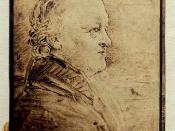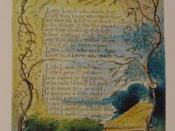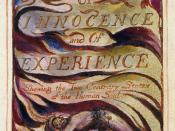"The Lamb" is one of the poems in the Songs of Innocence, which was published in 1789. As the contrary poem to "The Lamb", "The Tiger" in the Songs of Experience came 5 years later in 1794. In the fifth stanza of "The Tiger", there is a question asked by Blake "Did he who made the Lamb make thee?" Blake questions if the tiger was created by the same being that created the lamb. In the following part of my paper, I would try to answer this question.
There are some symbols in the two poems. In the religious books, Jesus Christ is called the God's Lamb. So in one way, the lamb can be interpreted as Jesus or the God. Moreover, the setting and the description of animal create a sense of innocence of the lamb and a sense of evil of the tiger. The setting of "The Lamb" is in a green valley, and Blake uses such words as "little", "wooly", "tender", "meek" and "mild" to emphasize the Lamb's gentle nature.
The tiger, by contrast, is a terrifying animal 'burning' with fire in its eyes walking in "the forests of the night". And Blake uses "fearful", dread", "dreadful" these words to show the horrible image of the tiger and its power of destruction. And it seems that the tiger is forged in a furnace. In addition, just as "innocence" is simpler than "experience", the language and the form of "The Lamb" are easier than "The Tiger". "The Lamb" describes the mind of a child is speaking to a lamb. And Blake uses very simple words just like a children's poem. In this way, the author reinforces the sense of innocence. "The Tiger" is more complex. Blake uses pairs of rhyming couplets to create a sense of rhythm and...


